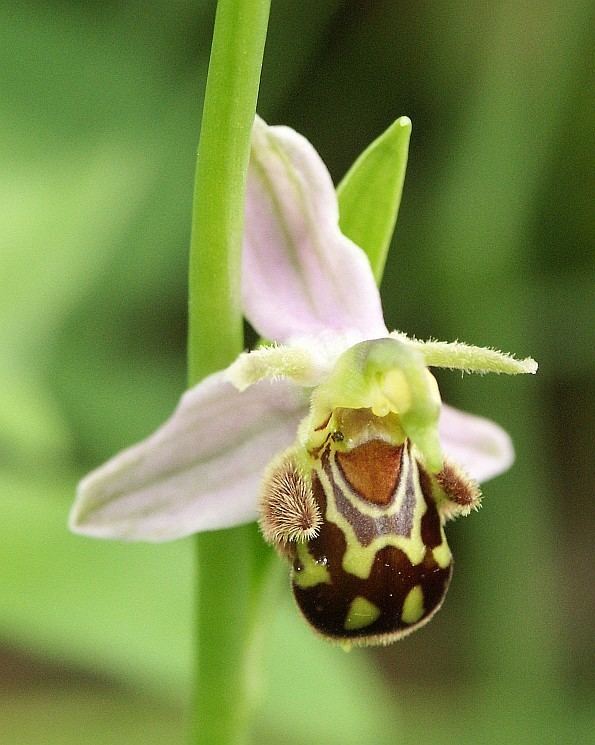 | ||
In evolutionary biology, mimicry in plants are several forms of mimicry, such as Bakerian mimicry, Dodsonian mimicry and Vavilovian mimicry, of other organisms by plants, most commonly flowers. In Pouyannian mimicry, a flower, such as some species of orchid, mimics a female insect, luring males in search of a mate to pick up or deposit pollen.
Contents
Bakerian
Bakerian mimicry, named after English naturalist Herbert G. Baker, is a form of automimicry or intraspecific mimicry that occurs within a single species. In plants, the female flowers mimic male flowers of their own species, cheating pollinators out of a reward. This reproductive mimicry may not be readily apparent as members of the same species may still exhibit some degree of sexual dimorphism, i.e. the phenotypic difference between males and females of the same species. It is common in many species of Caricaceae, a family of flowering plants in the order Brassicales, found primarily in tropical regions of Central and South America, and Africa.
Dodsonian
Dodsonian mimicry, named after American botanist, orchidologist, and taxonomist, Calaway H. Dodson, is a form of reproductive floral mimicry, but the model belongs to a different species than the mimic. By providing similar sensory signals as the model flower, it can lure its pollinators. Like Bakerian mimics, no nectar is provided. Epidendrum ibaguense, a species of epiphytic orchid of the genus Epidendrum that occurs in Trinidad, French Guyana, Venezuela, Colombia, and northern Brazil, resembles flowers of Lantana camara and Asclepias curassavica (commonly called Mexican butterfly weed, blood-flower, scarlet milkweed, or tropical milkweed), both are species of flowering plant with the first in the verbena family, while the latter belongs to the milkweed family, and both are native to the American tropics. Epidendrum ibaguense is pollinated by monarch butterfly (Danaus plexippus) and perhaps hummingbirds. Similar cases are seen in some other species of the same family. The mimetic species may still have pollinators of its own though, for example a Lamellicorn beetle, which usually pollinates correspondingly colored Cistus flowers, is also known to aid in pollination of Ophrys species that are normally pollinated by bees.
Vavilovian
Vavilovian mimicry (also known as crop mimicry or weed mimicry), named after Russian plant geneticist who identified the centres of origin of cultivated plants, Nikolai Vavilov, is a form of mimicry in plants where a weed comes to share one or more characteristics with a domesticated plant through generations of artificial selection. Selection against the weed may occur by killing a young or adult weed, separating its seeds from those of the crop (winnowing), or both. This has been done manually since Neolithic times, and in more recent years by agricultural machinery.
Pouyannian
Many plants have evolved to appear like other organisms, most commonly insects. This can have wide-ranging benefits including increasing pollination. In Pouyannian mimicry, flowers mimic a potential female mate visually, but the key stimuli are often chemical and tactile. The hammer orchid (Drakaea spp., an endangered genus of orchid that is native to Australia) is one of the most notable examples. The orchid has both visual and olfactory mimics of a female wasp to lure males to both deposit and pick up pollen.
